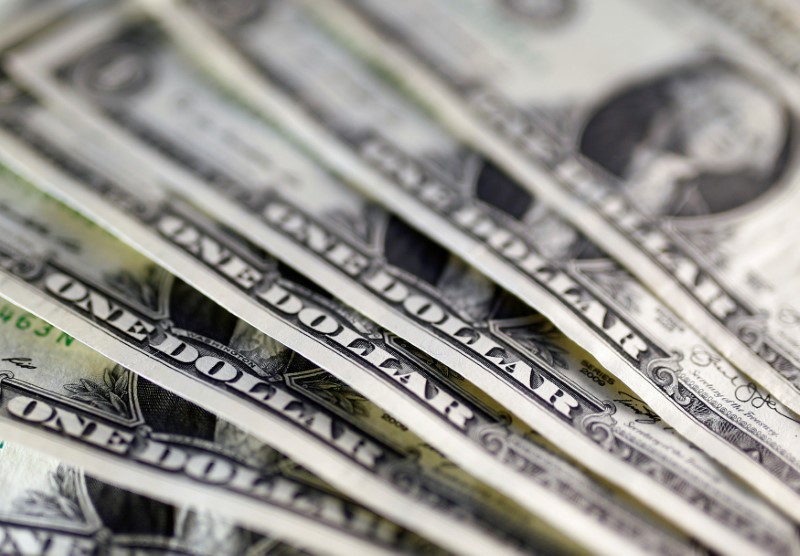(Bloomberg) -- Two weeks after investors dumped everything they could to hoard U.S. dollars, some are now happy to sell.
The Bloomberg Dollar Spot Index is headed for its biggest weekly loss since 2009, with the greenback sliding against 16 major peers. Traders point to a confluence of reasons, ranging from less stress in funding markets, the repatriation of funds as the quarter ends and the worsening coronavirus outbreak in the U.S.
“The easing of dollar-funding demand thanks to provisions by global central banks is adding to the dollar weakness,” said Jun Kato, chief market analyst at Shinkin Asset Management Co. “It’s dollar-based selling as investors are increasingly worried about the jump in virus infections in the U.S., raising concerns about the impact to employment, personal consumption.”
The Bloomberg Dollar Index has dropped 3.5% this week, paring back gains of more than 8% in the previous two weeks. It has slid at least 5% against currencies including the Australian dollar, the British pound and the Mexican Peso in the past 5 days.
The decline comes after the Federal Reserve expanded currency swap lines to nine more central banks, ramped up cash offered to the repurchase markets and introduced a series of 2008 crisis-era tools to unfreeze credit markets. Stress in cross-currency basis markets, a key funding channel, has eased.
Funding Markets See Glimmer of Light With Dollar Stress Easing
The three-month dollar-yen basis is now back to levels seen in early March, while the euro equivalent has swung into positive territory, meaning floating rates euros are at a premium to the dollar. In foreign-exchange swap markets, the costs to borrow dollars is back to 1.80% after it printed at more than 2.5% last week.
“It’s 100% a dollar-funding story -- the mean reversion of the dollar liquidity crunch is prompting all other FX to rally against the dollar,” said Margaret Yang, a strategist at CMC Markets Singapore Pte. “Everything is getting sold against the dollar today.”
Asia Gains
The yen surged as much as 1.2% on Friday, fueled in part by repatriation flows ahead of the nation’s fiscal year end on March 31, according to Takuya Kanda, general manager at Gaitame.com Research Institute in Tokyo.
Other currencies in Asia bounced off multi-year lows reached during the worst of the sell-off. The Australian dollar had dropped to the weakest since 2002 last week, while the Indonesian rupiah had approached the record low reached in the Asian financial crisis in 1998. Both rebounded, along with the Korean won.
Traders also pointed to the rising virus count in the U.S. and a jump in jobless claims to 3.28 million last week that’s sapping the greenback.
To be sure, the dollar weakness may be temporary.
As the new quarter rolls in on Wednesday, repatriation funds will slow and the safe haven bid from a worsening global pandemic may fuel a resurgence in greenback demand.
“This week was about the Fed and the U.S. economic stimulus helping markets to calm down a bit, but next week we’ll see a flow of indicators,” said Kim Yumi, a market strategist at Kiwoom Securities Co. “If the data turn out to be bad, it could drive demand for dollars again.”
